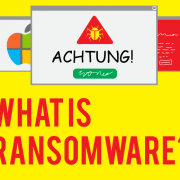How Risky is Your Business?
There is no doubt about it; no one can dispute the importance of consistently backing up your company’s information if you want to avoid data loss disasters. However, if you really want to be sure that you are doing everything within your power to protect your company’s data from corruption, infiltration from hackers and all other forms of data loss, there is a lot more that must be considered than just having a solid backup.
Indeed, the fact of the matter is that no matter what level of data encryption is being used, how many redundant, mirrored copies of data are backed up or how well the emergency sprinkler system works in the off-site data storage center, something can always go wrong. This is where risk assessment methods come into play; trying to abstractly assess where things are most likely to go wrong within your company’s IT system. By utilizing one of the many risk assessment protocols available today, your company can more easily predict how likely risks are to happen, and learn how to avoid these risks in the first place as well.

One of the fundamental advances brought about by risk assessment protocols in general has been the creation of glossaries of terms that people can use to more easily describe the often very complicated aspects of risk assessment and management itself. One system that specializes in this field is called “Factor Analysis Information Risk”, or “FAIR”, which gained notoriety after it was endorsed by the chief information security officer of Mutual Insurance. Started back in 1996 by a business community consortium called “The Open Group”, besides seeking to standardize the language of risk, FAIR also seeks to help businesses see how their overall risk levels may eventually effect them financially, on both individual elements of their business’s IT system and macroscopic levels as well, so that they can be more potentially prepared if disaster strikes.
Another very popular risk assessment option that is used by both businesses and government agencies has the unlikely and essentially unpronounceable name of “NISTRMF” (which stands for the even more cumbersome “National Institute of Standards and Technology’s Risk Management Framework”). This risk assessment protocol can be applied to any information technology system, and has been found to be highly effective at both analyzing risk levels within companies or organizations and also helping them find out just how effective the methods that they are currently employing to minimize risk are in the first place. In addition to this, NISTRMF specializes in helping government agencies everywhere match their security levels to the standards set by the federal government.
While many of these risk assessment protocols are available to almost all enterprises, some companies have gotten big enough that they have created their own risk assessment systems. One of these is TARA (or “Threat Agent Risk Assessment”), which was created by Intel. Like many of the other risk assessment methods, the goal of TARA is to help companies find out where their highest levels of risk potentially exist, and what they can do to both minimize these risks and be prepared to deal with them if they do indeed come into fruition. In addition to this, Intel has created a huge filing system that is available to all users of TARA, within which they have stored massive amounts of data concerning different types of threats and how they have historically been overcome.
There is no doubt about it; competing in the business world is indeed “risky business”, and risk assessment is thus a very important aspect of making sure that your company stays ahead and avoids data loss and other IT disasters. And, while no system is perfect, by using a combination or risk assessment systems, security protocols, off-site data backup and other risk management tools, business owners can rest assured that they have done all that they can do in order to keep their company’s assets and information as safe and secure as possible.






Leave a Reply
Want to join the discussion?Feel free to contribute!